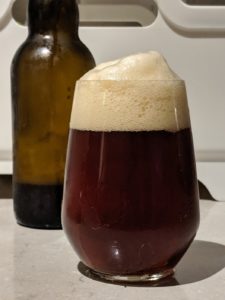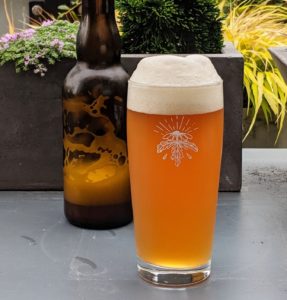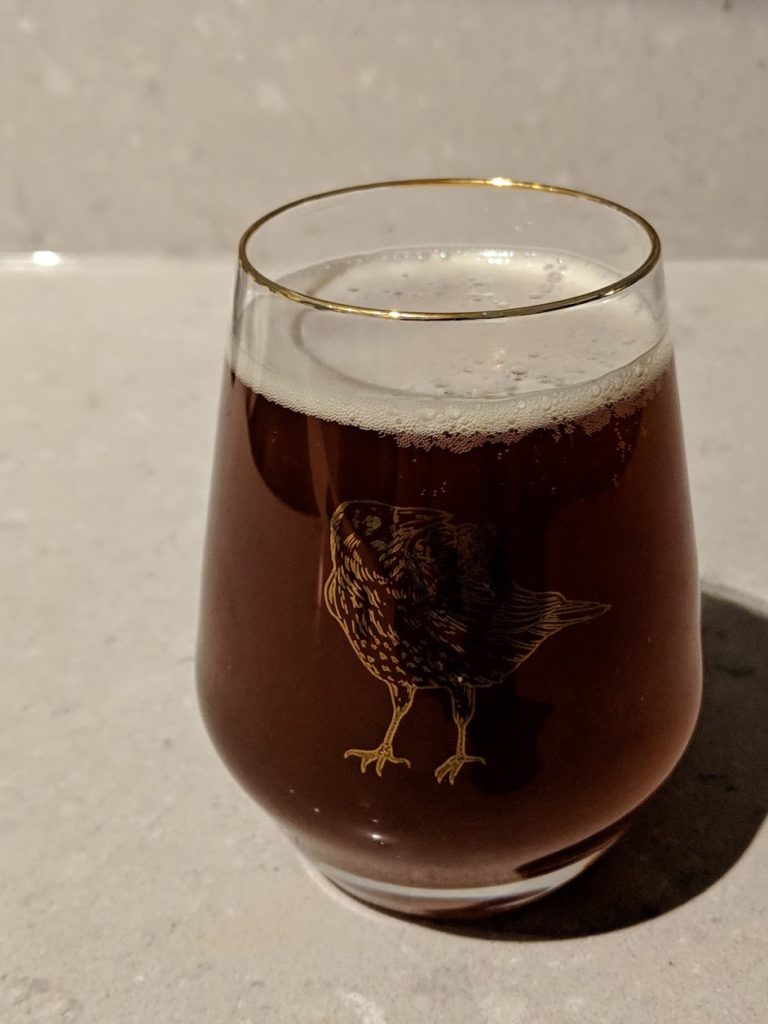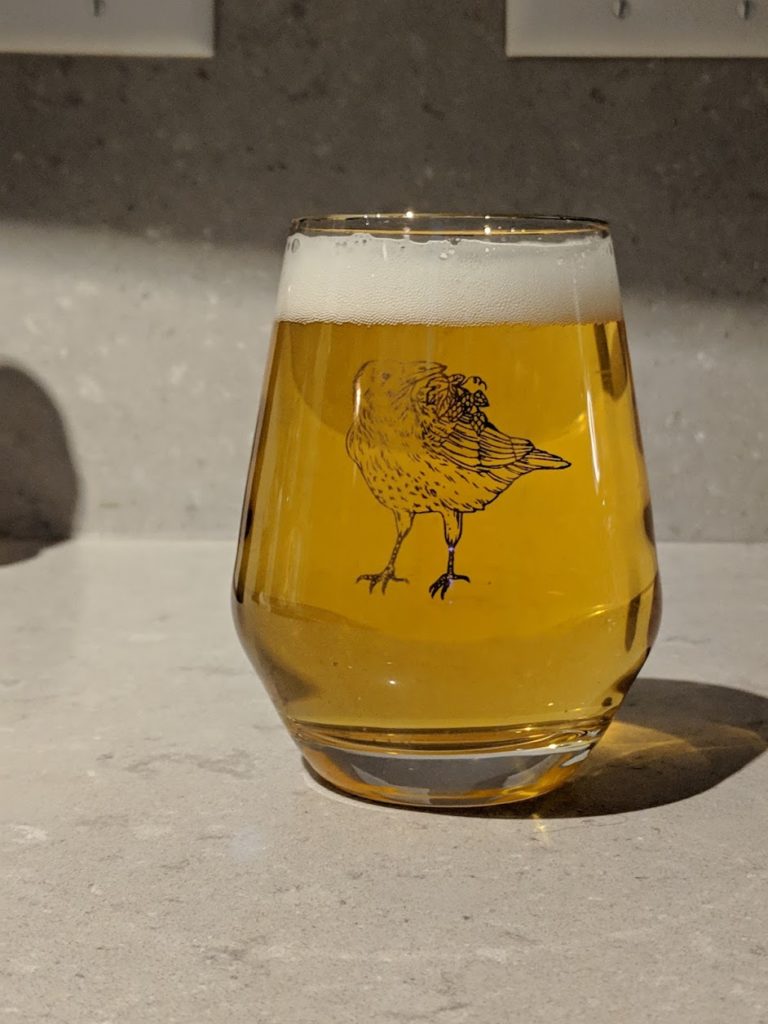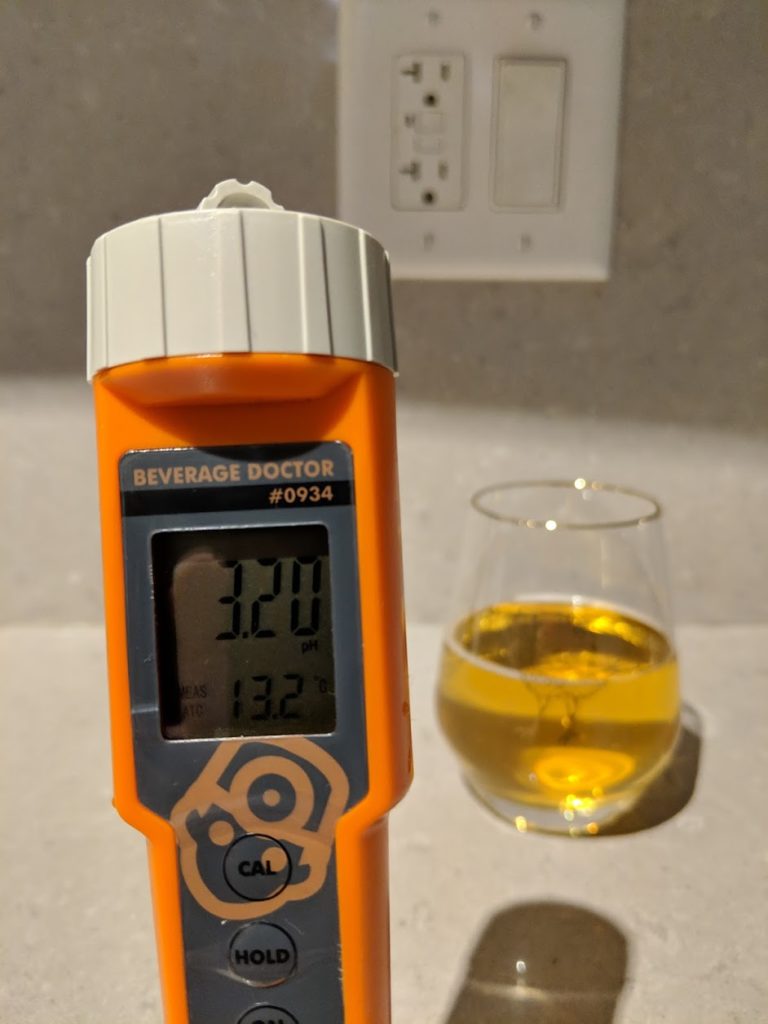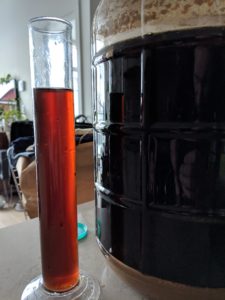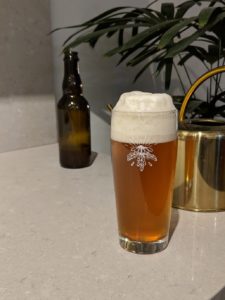Brewed: March 3rd, 2019
There’s been an impulse-bought package of Hordinal kveik in my fridge for several months, and I’ve become increasingly stressed out about its advancing age and lacked inspiration with what to do with it. I had an ah-ha moment when considering its high alcohol tolerance: I should brew a big barleywine with it. The high level of fruity esters that make it great as a replacement for English strains in IPA could potentially translate to English-style barleywine as well.
To compliment the yeast, I wanted to keep the grist simple/rustic and the hopping at a minimum. A little additional character was included via blackstrap molasses as well. I wanted this to be a big beer to take advantage of (or abuse the heck out of) the yeast. Therefore the specs are as follows:
OG: 1.115
Est FG: 1.035
IBU: 36
ABV: ~12%
To get better efficiency as well as the colour and character of a long boil, I sparged to provide a larger pre-boil volume and get all that sugar out of the grain. Batch size is tailored such that I can transfer to my 3.5 gallon brew bucket for secondary with minimal headspace, primary fermenting for approximately one week in the 7 gallon brew bucket with temp control.
Mash Schedule:
131F dough in, hold 15 minutes (26L)
150F for 45 minutes
154F for 75 minutes
161F for 30 minutes
170F mash out, sparge (4L)
Boil: 180 minutes
Grist:
7.50 kg Thomas Fawcett Maris Otter (95.5%)
0.35 kg Blackstrap Molasses (4.5%) – added @ 15m
Hopping:
25g Nugget @ 60 min (36 AAU)
Other:
1/2 tablet Whirfloc @ 15 min
3g CaCl, 1.5g gypsum in mash water
Fermentation:
Escarpment Labs ‘Hordinal kveik’ 180B pack, dated BB March 22
+ ~50mL vial of Hordinal from local brewery added @ 24 hrs
No starter; shaken only since out of pure O2. (really pushing my luck…)
Add 1/2 tsp Yeast Superfood & Energizer @ 24h
Fermented at 83F to start, increase of 1F per day over 6 days (88F maximum).

